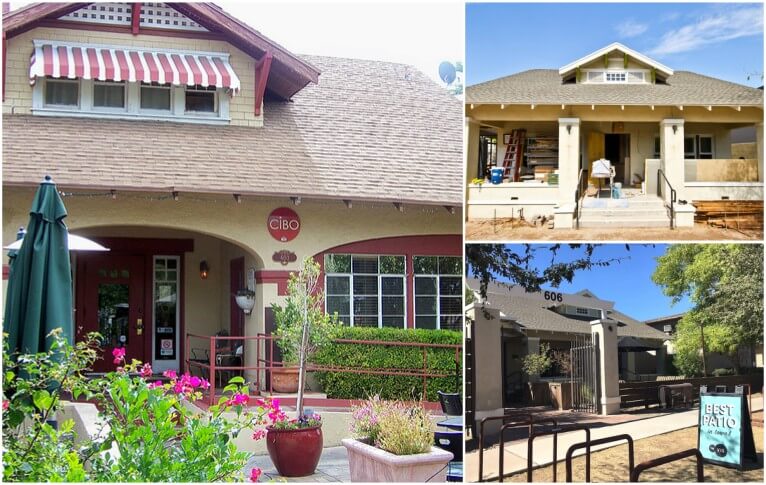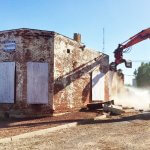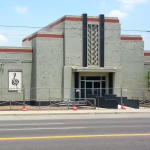The 122-year-old Clinton Campbell house was destroyed September 15, signifying the loss of yet another historic home in downtown Phoenix. There are now only 49 homes built in the 19th century in all of Phoenix.
Happening now: demolition of the Clinton Campbell House, one of 50 houses from the 1800s. pic.twitter.com/d26aRHEGOg
— Downtown PHX Journal (@dtphxjournal) September 15, 2017
“The fewer we have, the more precious they become,” said Michelle Dodds, the City of Phoenix Historic Preservation Officer.
Downtown Phoenix is experiencing rapid development, and land prices have been rising ever since the recession in 2008, according to the President of the Roosevelt Action Association Andie Abkarian.
This has created development pressure in downtown Phoenix, particularly in the area south of Roosevelt where most of these homes are located.
“The fewer we have, the more precious they become.”
— Michelle Dodds, the City of Phoenix Historic Preservation Officer
According to Abkarian, there is currently a tension between property owners and the advocates for historic preservation.
“Some land and property owners are terrified that the preservation community is going to stop them from doing what they want to do on their land,” said Abkarian.
Sometimes the land a house sits on is worth more than the house itself, and the cost is too high to restore the house, putting the property owner in a perceived economic hardship.
According to Abkarian, Proposition 207 was passed in 2006 and made it illegal to take away the property rights of developers. This proposition also made it illegal to force property owners to invest in home rehabilitation.
Although there are plenty of alternative uses for these houses, Abkarian said that some developers “don’t see the value in the structures,” even though other developers in the past have been successful in transforming these homes for new uses.
“The reason why people want to go to The Vig and they want to go to Cibo is because they’re (in) beautiful houses,” said Abkarian.

Right Cibo, Left The Vig Fillmore before and after construction.
Dan Klocke, a member of the Phoenix Historic Preservation Commission, agrees that “historic preservation is a great economic tool,” saying that some of the best businesses in downtown Phoenix are those in older buildings.
The Historic Register
Aside from adaptive uses, historic homes can be put onto the Phoenix Historic Property Register which will provide some protection from destruction.
To qualify to be on the historic register, the history and architecture of the home must be reviewed by the Phoenix Historic Preservation Office. Normally, houses 50 years or older are considered historic. Houses that are put on the local register will have a one-year demolition hold on them, which gives owners or the commission time to find other means to save the home.
A house can be on either the local register or the National Register of Historic Places. While being on the national register gives the owners some tax incentives, it provides no protection for the house.
“Some land and property owners are terrified that the preservation community is going to stop them from doing what they want to do on their land.”
— Andie Abkarian, President of the Roosevelt Action Association
According to Dodds, that gives the commission the chance to look at adaptive uses for the house such as moving the house, finding other owners who will maintain it, or turning the house into a restaurant.
Identifying Solutions
Although these efforts attempt to preserve the historic homes, there’s not enough available funding to support the rehabilitation of these old homes, according to Klocke.
A bond was created in 2006 that gave grants to property owners struggling to afford rehabilitation of their historic buildings. There are four different grant programs, two of which go toward historic home rehabilitation.
But the money from this bond is quickly dwindling, and there is no other source of money to support this effort, according to Klocke.
“We’re not going to be as successful if we don’t find another source of funds,” said Dodds.
Bill Scheel, a member of the Phoenix Historic Preservation Commission, will be the chair of an upcoming subcommittee that will search for ways to generate money that will go toward preservation.
“We’re not going to be as successful if we don’t find another source of funds.”
— Michelle Dodds
According to Scheel, this subcommittee will look for possible sources of funding, such as a bond election, revolving loan funds, or working with an institution. Klocke, another member of this subcommittee, said that they will begin work in a few weeks.
The Arizona State Historic Preservation Officer, Kathryn Leonard, said that the best way to ensure protection of historic homes is to offer incentives to property owners.
“The reality with preservation,” Leonard said, “is we do so much better when we offer incentives.”
According to Leonard, residential properties that are designated historic receive a 50 percent tax break, which not many other states have. Although, there are still many homes in Phoenix that are not designated and cannot be protected, according to Leonard.
“We need people to see there’s economic value to the houses,” said Leonard.







